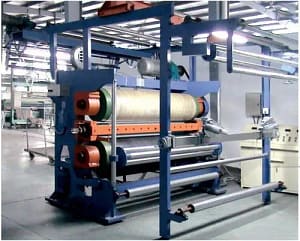A Heat Recovery Ventilation (HRV) system is a mechanical ventilation system designed to improve indoor air quality while conserving energy by recovering heat from exhaust air and transferring it to incoming fresh air. It’s widely used in residential, commercial, and industrial buildings to maintain a healthy indoor environment, especially in tightly sealed, energy-efficient structures where natural ventilation is limited. Below is a detailed explanation of its components, working principle, benefits, and applications.
Components
An HRV system typically consists of:
-
- Heat Exchanger Core: The heart of the system, where heat transfer occurs. It’s often a cross-flow or counter-flow design made from materials like aluminum, polymer (e.g., polypropylene), or specialized membranes.
- Fans: Two separate fans—one to extract stale indoor air and another to draw in fresh outdoor air—ensure continuous airflow.
- Ductwork: Channels that distribute fresh air into the building and exhaust stale air outside.
- Filters: Clean incoming air to remove dust, pollen, and pollutants.
- Housing: A unit encasing the components, often insulated to minimize heat loss.
Working Principle
The HRV operates by simultaneously ventilating a building and recovering heat:
- Exhaust Process: Stale, warm indoor air (e.g., from kitchens, bathrooms) is drawn out by the exhaust fan and passed through the heat exchanger.
- Heat Transfer: In the exchanger, the outgoing warm air transfers its heat to the incoming cold outdoor air without the two streams mixing. This is facilitated by thin walls or plates in the exchanger core.
- Fresh Air Supply: The preheated fresh air is then filtered and distributed into living spaces, while the cooled exhaust air is expelled outside.
- Efficiency: HRVs typically recover 60-95% of the heat, depending on the exchanger design and airflow rates.
Unlike systems that recover both heat and moisture (e.g., Energy Recovery Ventilators, ERVs), HRVs focus solely on sensible heat (temperature) transfer, making them ideal for colder, drier climates where humidity control is less critical.
Benefits
- Energy Efficiency: By preheating incoming air, HRVs reduce the energy needed for heating, lowering utility bills and carbon footprints.
- Improved Air Quality: Continuous ventilation removes indoor pollutants (e.g., CO2, VOCs) and prevents mold growth from excess moisture.
- Comfort: Maintains consistent indoor temperatures without the drafts associated with open windows.
- Sustainability: Aligns with green building standards (e.g., Passive House) by minimizing energy waste.
Applications
- Residential: Common in modern homes, especially in cold regions like Canada or Scandinavia, to balance ventilation with heat retention.
- Commercial: Used in offices, schools, and hospitals where high occupancy demands constant fresh air supply without sacrificing energy efficiency.
- Industrial: Applied in facilities with heat-intensive processes (e.g., drying or manufacturing) to recover waste heat, as seen in systems like the heat pump drying example with cross-flow exchangers.
Example Scenario
In a winter climate (e.g., outdoor temp at -5°C, indoor at 20°C), an HRV might preheat incoming air to 15°C using exhaust heat, reducing the heating system’s workload by over 70% for that air volume. A typical unit for a home might handle 100-300 cubic feet per minute (CFM), with a cross-flow exchanger made of lightweight polymer achieving a heat recovery rate of 80%.




